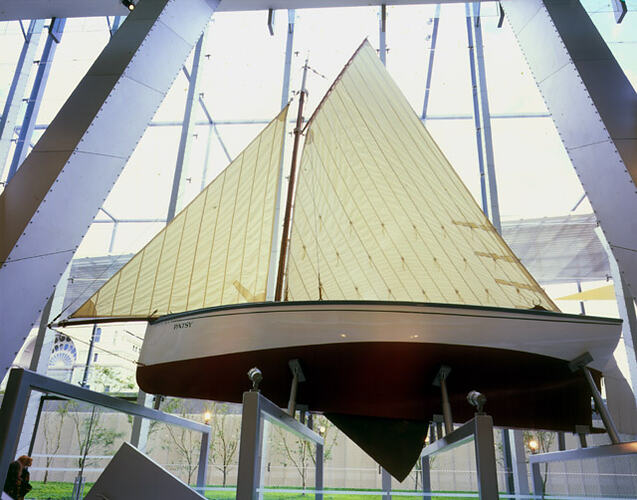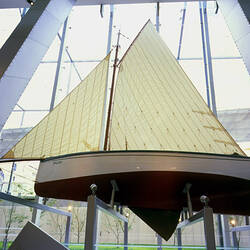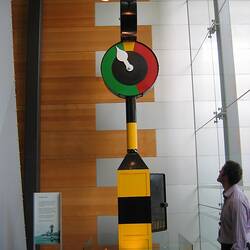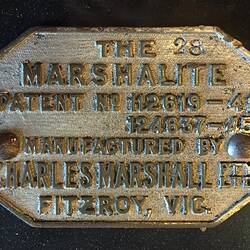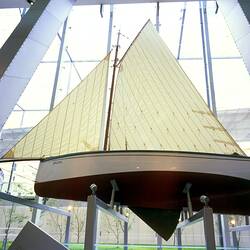The things we keep proclaim who we are. What a society preserves plays an intrinsic role in the way in which that society fashions its identity. We live in a world that is cluttered with objects, specimens, buildings, sites and ephemera. Since it is not possible to keep everything, it is reasonable to ask: what should we keep? And what methods do we use to safeguard these material things, given that they will degrade, as all material things do? These are philosophical and technical questions that must be considered by all museums, libraries and galleries.
Museum Victoria's conservators have the enormous task of preserving approximately 16 million objects and specimens. This presents two major challenges. The first of these is to understand the significance of both the scientific specimens and the material heritage from many cultures in the Museum's care, in order to conserve it in an ethically appropriate manner.
To do this we must understand the cultural and scientific context of each object and its social, historical, intellectual and aesthetic value. The second challenge conservators face is in developing solutions to deal with the fickleness of the material world - everything degrades.
To understand and retard processes of deterioration we must look to the physical sciences, where the testing and analysis of materials have a major role in the development of suitable treatments for objects, and the preservation of entire collections.
In short, a combined cultural and scientific view of our material heritage is necessary in order to preserve it for the future. The following are some conservation stories associated with the presentation of objects in the front foyers and The Walk at Melbourne Museum.
Baskets
The preservation of Koorie baskets assists in the cultural affirmation for contemporary Victorian Aboriginal communities. Local indigenous knowledge combined with materials research can reveal hidden stories about the baskets.
For example, a basket may be a storehouse of knowledge showing Koorie weaving techniques, the types of local plants used, and the continuity of traditions. Food and other residues may provide evidence of usage and diet, and the plant fibres provide important ethno-botanical information. Oils or any patina on the surface of the basket may reveal a history of use by the traditional owners.
In the preservation of a basket, all facets of its nature need to be taken into account, even for a simple conservation treatment such as cleaning. Any repairs undertaken by conservators are unobtrusive and minimal, and are usually only done to provide structural strength. Residues, oils, or patina are left in place, as they are an important part of the history of the basket, and for the evidence they may offer as new investigative techniques are developed.
Marshalite traffic signal
The traffic signal designed by Charles Marshall in 1936, and thus called a Marshalite, was acquired by Museum Victoria in 1973, in poor condition. It had lost most of its painted surface and suffered corrosion of the metal body.
It was restored to working order in the early 1990s for the opening of Scienceworks. The restoration included an overhaul of the mechanism, new electrical components, and the cutting out and replacement of corroded metal.
Once this work was completed, the outside surface of the signal was re-examined to see if the object could be interpreted by the public while on exhibition. The signal was difficult to read as it had lost a great deal of paint on the face, and metal had been replaced. Consequently it was decided to repaint it, based on the paint scheme of an original signal owned by the manufacturer. Samples of the original paint and colour photographs were taken to document the previous state of the signal. The new coat of paint allowed people to read the signal and understand how it worked.
However, the object is significantly changed by such restoration; the old surfaces are gone and the old electrical wiring has been removed. All of this has been recorded in photographs, paint cross-sections and notes.
A compromise between conservation treatment and a restoration treatment has allowed for the presentation of a 'working' Marshalite.
Patsy
Patsy, a 'Couta fishing boat, was built in Melbourne in the 1920s. Over the years she was modified many times by successive owners. For example, instead of the traditional open cockpit, a cabin and wet well had been added. Other changes included the removal of the centre plate case (which held the centre plate), the reshaping of the deck, and the addition of many sister ribs to strengthen the aging hull. For display, a conservation-restoration project was undertaken by the Wooden Boatshop at Sorrento, in collaboration with the Museum Victoria Conservation Department.
The aim of the project was to return Patsy to her first appearance while keeping as many of the original materials as possible.
While it is not intended that Patsy will ever sail again, she does have to be structurally sound to withstand permanent display in the lower foyer of Melbourne Museum. Restoration of Patsy meant that much of the evidence of her varied incarnations during her working life was removed. However, these were well documented so that, although she has been returned to her original appearance, her long history of physical change is not lost. This documentation takes the form of drawings, photographs, notes and samples. Today we see Patsy in the original state for which she was first intended - she represents a traditional 'Couta Boat in both construction and materials.
More Information
-
Keywords
conservation & restoration, Traffic Control Signals, sailing vessels
-
Authors
-
Article types
